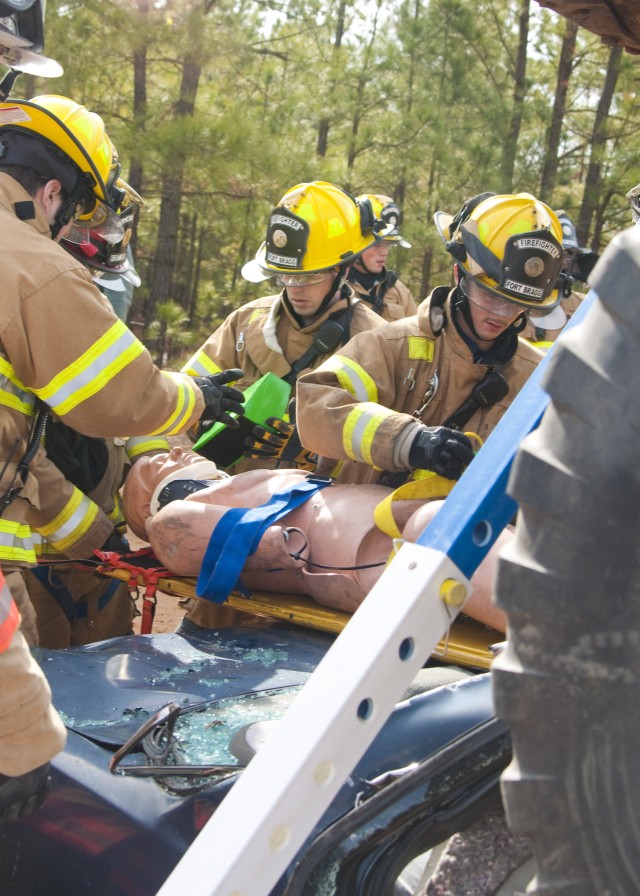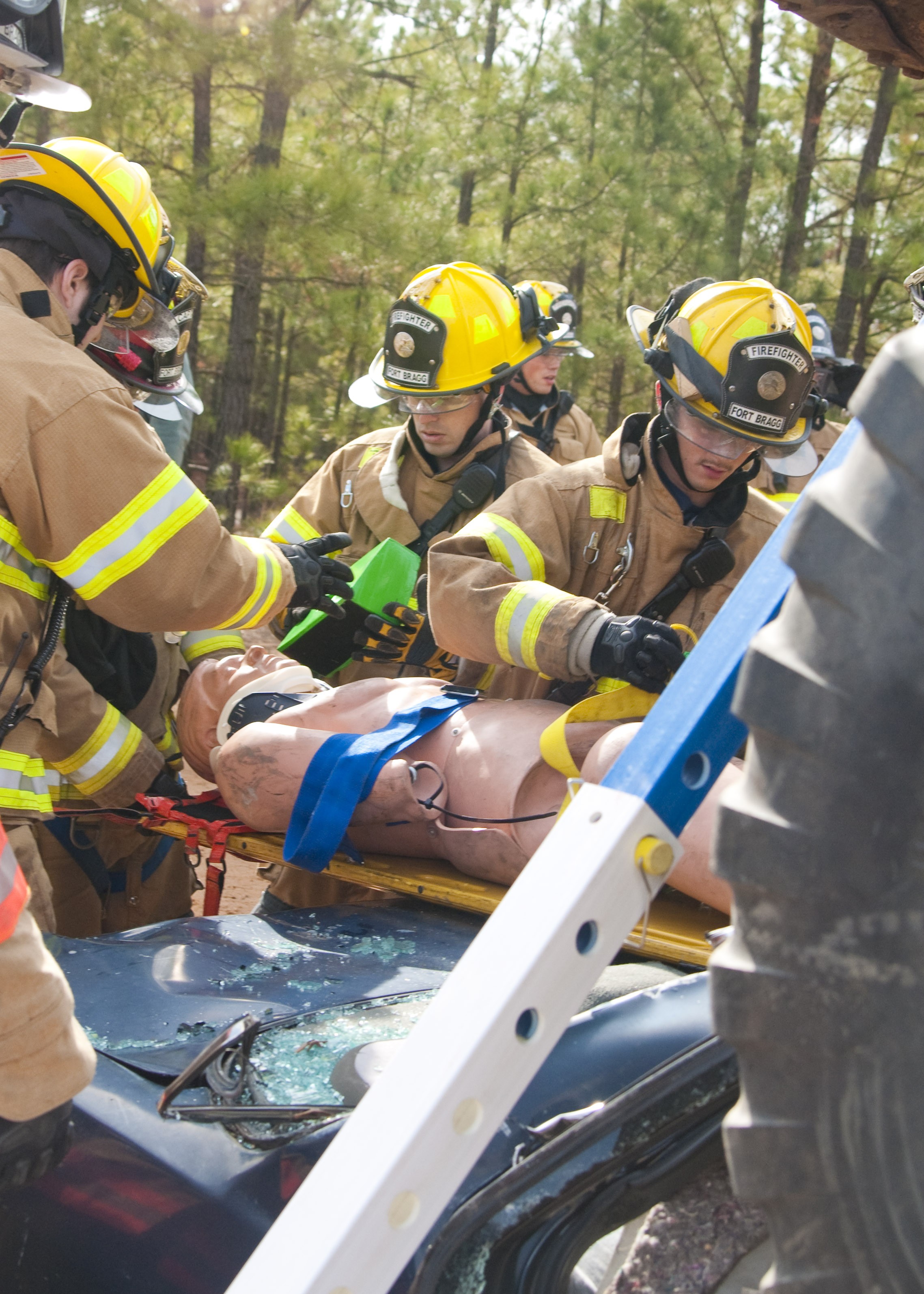FORT BRAGG, N.C. - Echoing through the Fort Bragg Fire and Emergency Service radios was the call, "two-car collision; one military, one civilian, off of Gruber Road across Pike's Field."
The start of the Fire and Emergency Service's rescue exercise was on its way.
On Jan. 20, Battalions 1 and 2 headed across post to the simulated vehicle accident.
Vehicle accidents are nearly an everyday occurrence for the Fire and Emergency Services, but one that involves a tiny Honda Accord and a five-ton military truck is something that luckily doesn't happen often. This type of scenario allows rescuers to be prepared to face a dangerous situation when and if they come upon such an accident.
Upon arriving on site, the rescuers assessed the wreckage and soon discovered that one person, possibly two, were inside the Honda. An adult male was stuck in the driver's seat and there was a car seat in the front passenger side, flipped upside down. The rescuer's first objective was to secure the top vehicle so that when they tried to pull out the victims from inside, the truck wouldn't cause further harm to everyone involved.
"We were trying to get them to hone in on their skills," explained battalion chief Gerald Auch. "The combination of new vehicle technology and throwing a military vehicle into the mix, makes our job much more difficult."
With the growing need for safer vehicles, new technology dealing with the types of material put into cars and trucks can cause major troubles for rescuers upon entering a wrecked vehicle. Anything from stronger metal to new car designs have to be considered when trying to cut through the vehicle's frame to get to the victims in need.
That's where Scott Lovern comes into play. Lovern works for L.N. Curtis and Sons, an emergency equipment vendor who provides the proper equipment for such scenarios. Prior to the exercise, Lovern and other associates explained and trained the rescuers on the new technologies and how to properly operate the equipment. The rescuers were also briefed on safety and how to be prepared for anything that could arise during the rescue mission.
"Something like this is extremely dangerous," said Auch. "These guys are trained on everything from what to expect to proper gear and to look out for each other during the drill."
After using the jaws of life, a machine that can cut through metal, they cut through the back window and a side of the Honda and a firefighter was able to squeeze into the backseat. He retrieved the car seat from the front passenger seat with a baby strapped in.
An improperly fastened car seat can flip upon impact and will cause significant harm to a baby or child.
The Fort Bragg Fire and Emergency Services department offers free car seat checks to ensure proper use and that it is safely fastened.
Once the baby was rescued, the firefighters continued their mission and retrieved the driver.
Not knowing the condition of the driver, the rescuers had to take care when pulling him out as to not cause him further harm.
Again, using the jaws of life, they pryed up the roof of the car to make more room for a stretcher and the patient to be safely hoisted out.
Firefighters successfully rescued their two victims in a matter of minutes, minus a short break due to real-life accidents that interrupted training.
Emergency services is a 24-hour job and being part of one of the busiest emergency services in the country, training needs to be squeezed in whenever they can.
"We are also getting the new firefighters with the gain of Pope (Air Force Base), so this is just one phase of integrating the two to train them up on our procedures," explained Auch. "This is extremely important because not only does the Fort Bragg community rely on us, the public community relies on our life saving skills as well."


Social Sharing